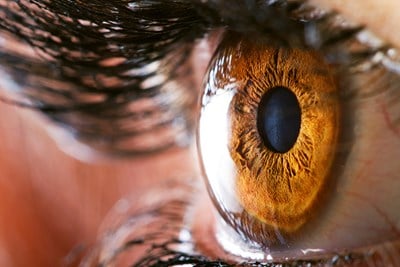There are a variety of disorders and issues that can result in blindness. While some are hereditary and others contagious, in almost all cases the earlier diagnosis and treatment are sought, the better the chances of managing vision impairment become. Here’s a look at some of the early warning signs of common disorders that lead to blindness.
General Concerns
There are a variety of eye issues that can cause blindness, all with their own set of symptoms -- and this is far from a comprehensive list. It’s important to pay attention to any changes in your vision. Most adults should see an ophthalmologist (eye doctor) annually to check for any changes or disorders that may occur. If you’ve noticed increasingly blurry vision, difficulty seeing, night blindness, changes in colors, pain, or any other issues with your eyes that don’t seem normal, contact your eye doctor as soon as possible.
Cataracts
Cataracts are the most common cause of blindness and vision impairment worldwide. The lens of the eye, normally clear, becomes cloudy, making it difficult to see. Cataracts may be congenital (present at birth) but often develop later in life. There is no pain associated with cataracts, but vision may become blurry or what you’re looking at may appear dim. One eye may see double, and objects might appear to have a halo around them. Increasing sensitivity to light and a frequently changing prescription for your glasses can be other indicators of cataracts. Additionally, colors can become dim or develop a yellowish hue no matter the actual shade.
Glaucoma
Glaucoma is the result of damage and degeneration of the optic nerve, which sends signals from the eyes to the brain so you can see. There are several types of glaucoma, all of which can take time to be symptomatic. Acute glaucomas appear suddenly and come with a painful onset. The canals responsible for helping the eyes drain become blocked, causing increasing amounts of pressure and discomfort. You may notice halos, blurry vision, and redness around the eyes. Chronic glaucoma is much more common, which is a long-term onset that can be asymptomatic for many years, as there is no associated pain. Open-angle glaucoma may be evident by patchy vision or difficulty with peripheral vision.
Macular Degeneration
The macula is a small part of the retina that helps make details sharp and clear. When it begins to break down, this is a condition called macular degeneration, which interferes with everything from reading fine print to threading a needle. Symptoms of macular degeneration include blurriness of central vision (peripheral vision remains stable, as it is aided by other parts of the eye); additionally, this aspect of sight may become distorted or seem to have black spots across it.
Corneal Opacities
Corneal opacities are the result of injuries, infections, and congenital issues that create cloudy spots on the corneas. Sometimes there is only temporary vision impairment, while other times permanent blindness results. Symptoms may include redness or inflammation of the eyelids and eyes, excessive tearing or discharge, blurry vision, light sensitivity (photophobia), the feeling that you have something in your eye, cloudy spots on the cornea, or you may notice your vision beginning to grow steadily worse.
Diabetic Retinopathy
Specific to diabetics, diabetic retinopathy is a complication of diabetes that becomes more likely the longer an individual has diabetes. The retina can be damaged becomes of bursting blood vessels, an abnormality in blood vessels that form to replace, or the retina actually breaking free from the eye. Symptoms of diabetic retinopathy may not be present at first, but can include floaters in your line of vision (black spots or streaks), blurry vision, vision that tends to alternate between good and not so good, changes in your ability to see color, or a loss of vision.





